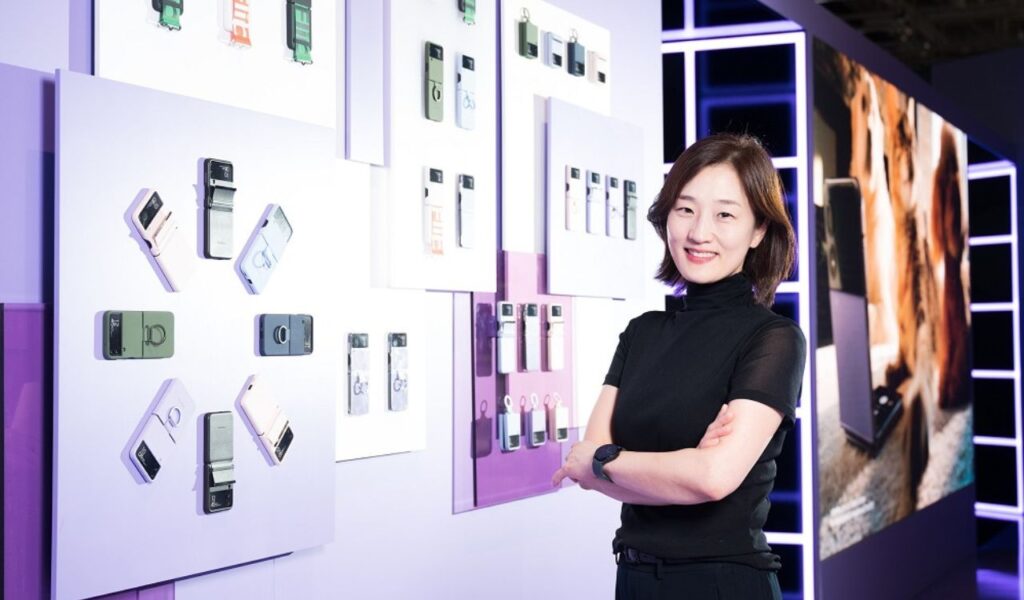Samsung unfolds the new future of mobile possibilities with its Fourth Generation Foldables smartphones. The Galaxy Z Fold 4 and Flip 4 are enhancing the user experience by providing a flexible screen that can fold and unfold seamlessly. The same comes with infinite UX design opportunities. This fulfils the needs of Galaxy users that are in search of a phone that fits in their pocket but simultaneously brings the untraditional mobile device that is intended to designed to offer meaningful, relevant and flexible experiences, that can match and fit into their lifestyle.
Now to help users to get useful insight into the journey of the foldable UX design evolution. Here, Samsung newsroom presents the most useful facts of the same by sitting with Yoojin Hong, Executive Vice President and Head of User Experience, Mobile eXperience Business at Samsung Electronics. Therefore, here in this article further we going to share all the Q&A in the form of key terms that have been coming out regarding flippable and foldable UX design.
Creation of Samsung’s lineup of foldable
With the increase in demand for smartphones which now become the key component of our daily lives. The need for big is also increasing nowadays. While users wanted to have a pocket as well as portable devices. Although, the two were complete reciprocal to each other.
The design UX for a foldable phone is totally different from a traditional phone. It’s basically the reimagination of the entire smartphone experience. Samsung realises time that this form factor will change the user’s relationship with their devices. While the foldable succeeded in recognising the user needs in a surprising way.
Samsung’s UX design philosophy for foldable
In creating a user experience on a phone, companies basically focus on a single static screen. As foldable are devices with two screens, therefore the UX should be more fluid. And this is the design of foldable since its origination.
The key to the design philosophy for foldable is UX design. That subsequently offers a variety of different and innovative benefits. Foldable UI should be completely invisible. The design is intuitive as the company wants its users to get familiar with the device instantly and can navigate it effortlessly.
Another foundation factor for foldable is to make it a tool that helps the user to create. It is evolving as a device that can unlock creativity through photography, art, gaming and more.
User base between Z Flip series and Z Fold series
Although the Z Flip series and Z Fold series both are foldable, both have different form factors. Also, both have distinct user bases. Talking about Z Flip users, then they see their devices as a factor of self-expression by enjoying the versatility and personalization. While on the other hand, Z Fold users inclining toward the large screen experience with the ability to do more simultaneously.
And thus both distinct user bases have separate feedback on the previous generations, and that encourages the company to focus on Z Flip 4 and Fold 4.
Customization and UI features have been improved for the latest Z Flip 4
With the introduction of the Z Flip 4, which provides the user’s capabilities of personalising the entire look of the device. Starting from hardware colour, accessories, Main Screen UI and now Cover Screen UI respectively. Here, the customisation goes beyond the point of simply decorating a phone’s UX. While it also includes customizing the user experience. And since Z flip 4 brings a new level of cover screen functions, that enables users to customise it through a variety of widgets.
Notably, it gives a unique experience of photo capturing and its enhanced UI of the camera opens up new possibilities for the FlexCam.
UI improved users boost their productivity and save time with the new Z Fold 4
In Galaxy Z Fold 4, Samsung provides improved interactions and concurrently eliminates the steps in activating settings. While the redesigned menus and layouts make action buttons close together. Since this is critically important on large screens, as it reduces the amount of finger touch for most common inputs.
It also simplifies the large-screen experience with its faster app transition and activation. This is done with an enhanced taskbar and it is always activated irrespective of the app you’re using.
Additionally, finger gestures provide more flexibility in order to view multiple apps on the screen. It provides the capability of the split window and pop-up window.
Samsung’s collaborations set the foundation for the entire foldable market
Samsung has associated with Google in order to create an ecosystem together, and this merger inspired each other to come up with enhanced features and techs. Through this merger, the company works parallelly. Even collaborating at the code level to modify Android to meet the needs of foldable devices.
As per the South Korean tech giant, to bring optimized experiences on foldable to life, they have associated with partners like Google, Meta and Microsoft. Now this enables the apps, that include Chrome, Gmail and Microsoft’s full Office suites and Outlook, to take healthy use of the Z Fold series large screen for an everlasting multitasking experience. As a part of this, FlexCam is being optimised for social platforms like Instagram, WhatsApp and Facebook.
Approach to keeping up with new consumer demands
The new generation foldable devices series are different from typical traditional devices. The new design differs in many aspects and therefore the UI as well. It transforms user behaviour, also changing the way people like photos, interact with their phones and many more. And it become a daily day routine with foldable phone users.
The new challenges come to drive the company to step forward with the new UX design. Samsung took every possible demand as a new challenge and brings innovation accordingly.
